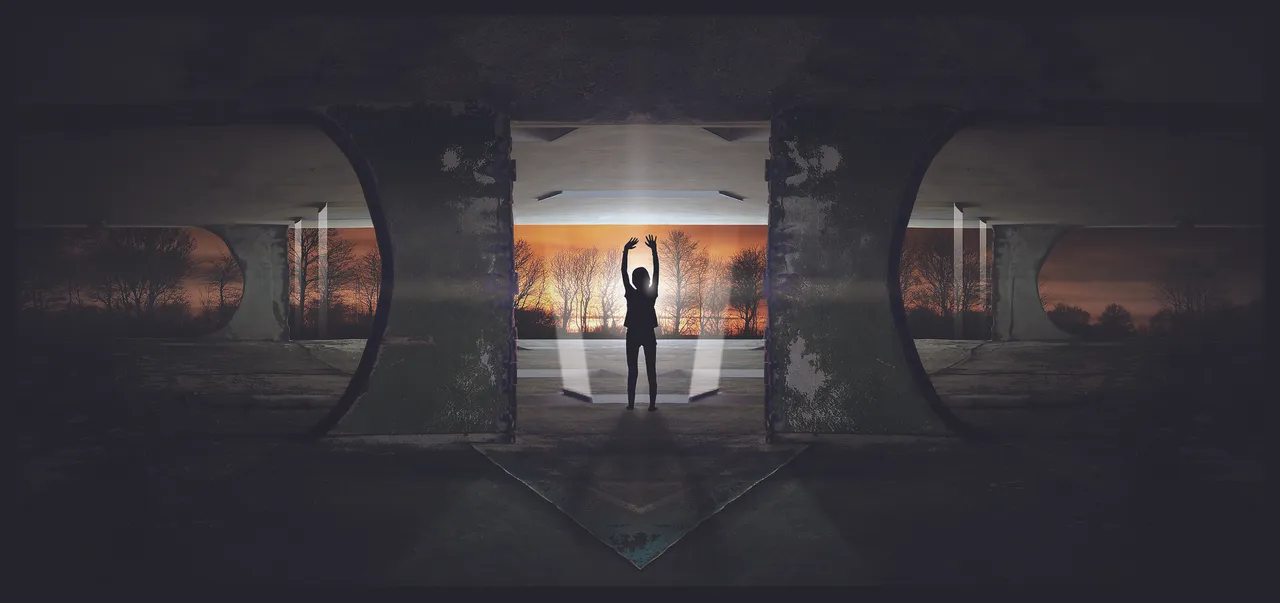
French Philosopher Descartes set out to find the source of reality in the early 1600s and tested every belief he had against what he called Radical Doubt to see what would remain as a truth. Taking an Empirical standpoint, he realized that there was only one thing that he could verify beyond a reasonable doubt. That was his own experience as the observer.

military-history.org
"Cogito ergo sum."—René Descartes
Or better known as; I think, therefore I am. This is where the notion that knowledge acquired through experience was born (Empiricism). Things like; "If a tree falls in a forest but no one is around to hear it. Did it really fall?" come into play.
If it does to you, you may lean more towards rationalism (logic, mathematics, and the belief that things hold knowledge before we can perceive it)—if not, the world may cease to exist if you aren't paying attention to it. In some cultures, it's believed that we all only exist due to a permanent observer that is always watching us, be it the FBI or perhaps God.
So what do thoughts, and the observer (you) have to do with meditation?

The Thoughts That Invade Us
We've all had thoughts of jumping out into traffic, stabbing someone, or other unrealistic and otherwise eerie thoughts that plague us at one time or another. We may not all turn out to become ax-murders per se, but it's common to entertain negative thoughts that come into our minds. Where do these negative thoughts come from? The short answer would be, the same place our positive thoughts come from. But where is that exactly?
When beginning mediation it is incredibly easy to become inattentive by thoughts seemingly "appearing from nowhere". Worries of the day, maybe the future, or a randomly placed distraction set out to ruin the exercise. This happens. Referring back to Descartes, we think therefore we are. Meaning, we are only the observer of the thoughts, not the thoughts themselves.
Next time that you find yourself being bombarded by a slew of thoughts that make you question if you may be a demon incarnate, remember this particular goal in meditation. To observe/perceive the thoughts without entertaining or interacting with them.

eskipaper.com
Thoughts and Breathing Are One in The Same
The first Hallmark of meditation begins with the awareness/ observation of your own breathing. You may feel your mind trying to control our breath at first, attached at how we breathe whether through the nose or mouth or how deep our breath is. After a while, you become only the observer no longer controlling and interacting with your own breathing but in complete awareness of it.
Observing thoughts is the next step. Just as how your breathing exists whether or not you give attention to it, your thoughts work in the same way. They are not you, no matter how strange or outlandish they could be. "How could I think of such a thing?" You didn't, you only became aware of the thought as it passed through your mind.

portalb.mk
How to Detach From the Thoughts
Recognize that the thoughts are not created by you. They are only passing through your consciousness
No matter what the thought is, don't interact/ think deeper about it
Regardless of how pleasing or distasteful the thoughts don't attach emotions or opinions to them
Don't create friction between yourself and the thought. Allow it to pass through you, without fighting, avoiding, nor embracing it.
The cat is not adorable, it's just a cat.

From Thoughts to Pictures
What I find interesting is that after some time of watching thoughts come and go, my brain gets bored that I'm not entertaining nor riding out any of these thoughts into an idea. At this point, I begin to see pictures flash across my mental screen. Flash may be an exaggeration here as each picture lasts a couple to a few seconds.
This is where some people may experience Night Terrors or what can be regarded as such. Now I may not be the brightest crayon in Pandora's Box, but seeing faces when your eyes are closed can be a strong yet equally terrifying experience. What if I told you this was also normal—that you are not going insane?
The pictures that we see on the onset of sleep are called Hypnogogic Imagery, and a known milestone to hit when attempting a WILD, or Wake Induced Lucid Dream. This greatly differs from a DILD (Dream Induced Lucid Dream) where you need a trigger to consciously realize you are dreaming when you're already asleep. Instead, you can enter a dream fully conscious.

pozadine.info
When In Doubt Knock Out
What got me started in meditation was my attempts at a successful WILD. You can in fact go from awake to lucid, but the part that will nab even the most focused is the sleep paralysis that occurs when the dream begins. Sleep paralysis is what prevents our bodies from moving in a dream, but can be experienced as being trapped in one's own body. Imagine, laying in bed while trying to allow your body to fall asleep—while keeping your mind awake. It's not simple to do.
This is why I meditate as the last thing before sleeping. I might go lucid but if I don't, my focus and awareness gets some training in the process.

When Pictures Become Movies
The images that we see, just like our thoughts—like our breathing is transient. If you try to hard to manipulate or control what your mind's eye is seeing, you won't be calm enough to enter sleep/ nirvana. Meditation and Lucid Dreaming/ Dream Walking all have a basis in detachment. The goal is to simply exist.
After some time of seeing random faces, scenes, objects, morphing texts, or fractals, your mind will begin to fill the pictures in further clarity. The scenes will become longer in greater detail, until these pictures become short movies.
Before you realize it, this movie isn't being watched on a screen but surrounding you from all sides. Two places that I liked transitioning into in the past included an endless field of tiny sunflowers with a hill and a lonely tree in the distance, or an endless beach as I walk along the shore—all sand on one side, ocean on the other, and nothing else in sight.
Sometimes when I reach this point I shock myself awake due to the obscurity of the experience, and other times I end up losing consciousness at the last moment.
If you are unsure of where to begin, be sure to check out my other posts on these subjects.
Meditation and Thinking of Nothing—Do We Think of "Nothing" or Not Think?
Learn Lucid Dreaming For Real: Dream Diary 4-9-18 Missed Breakfast Graduation

As always, thank you for stopping by and I hope you learned something interesting that you can experiment either through meditation or your own dreaming conquest!